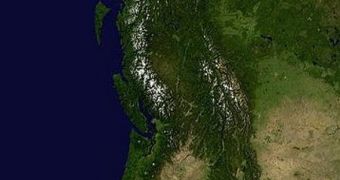The region adjacent to the Washington state capital city of Olympia apparently contains two fault lines that seismologists failed to discover until only recently.
The finding is bound to have significant implications, considering that the existence of the two areas changes the seismic activity risk levels in the Pacific Northwest to a great extent.
An entire rethinking of the equilibrium in the area is in order, researchers now say, as they are focusing their attention to learning as much as possible about the new fault lines.
These structures appear alongside subduction zones, which are areas in the planet's crust where tectonic plates slide one over the other.
These plates are extremely large slabs on which continents and oceans reside. They float atop the mantle, a layer of molten rock that covers Earth's core.
Currents in the mantle make the tectonic plates move alongside the surface of the planet. As this happens, they collide with each other, and this is how subduction zones appear.
Here, a plate slides beneath another one, in a process that sees the former getting melted, and reintegrated into the mantle.
The process is usually smooth, except for some areas. These regions, including the Pacific Ring of Fire, which also contains the Pacific Northwest, are located atop plates that do not slide smoothly over each other.
When the large slabs get caught in each other, tension begins to build as the other plates adjacent to them start pushing stronger and stronger.
Eventually, something is bound to give way. When this happens, earthquakes, volcanic eruptions and tsunamis are the most common consequences.
Understanding how fault lines rupture when such events take place is essential towards determining the risk a certain area is subjected to.
This is why scientists with the US Geological Service (USGS) are currently investigating the area in detail, in a bid to learn about the orientation and disposition of the newly-discovered fault lines.
“If they turn out to be active, it would increase the hazard in Olympia, but you can only have a certain number of earthquakes in an area, so the risk would decrease somewhere else,” says USGS geophysicist Thomas Pratt, quoted by OurAmazingPlanet.

 14 DAY TRIAL //
14 DAY TRIAL //